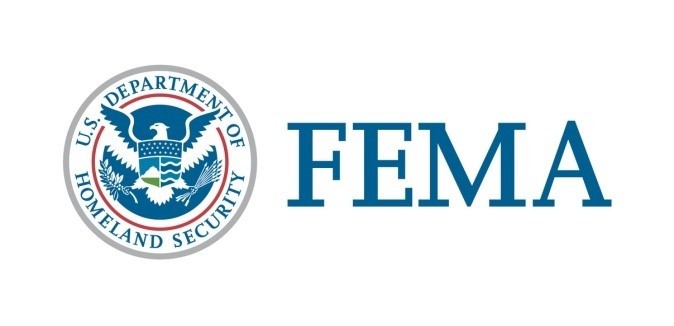FEMA Advisory: FEMA’s National Preparedness Report Highlights Cyber Security, Building Codes and Individual Preparedness for a Resilient Nation (December 5, 2023)
Federal Emergency Management Agency (FEMA) sent this bulletin at 12/05/2023 04:54 PM ESTFEMA Advisory
FEMA's National Preparedness Report Highlights Cyber Security, Building Codes and Individual Preparedness for a Resilient Nation
Today, FEMA released the 12th annual National Preparedness Report, which provides an overview of the nation’s current disaster risk and capability landscape while outlining progress towards achieving the national preparedness goal of a secure and resilient country. This year’s report continues to highlight the reality of rising costs, frequency and severity of disasters due to climate change as a challenge being faced at all levels of government.
What does the 2023 report say about the state of the nation’s preparedness?
The 2023 National Preparedness Report covers calendar year 2022 and captures trends based on data from the 2022 National Household Survey on Disaster Preparedness and National Risk and Capabilities Assessments including, the Threat and Hazard Identification and Risk Assessment and the National Stakeholder Preparedness Review. The evolving threat and hazard landscape includes:
- Lack of Standardized Building Code Adoption: The inconsistent adoption of building codes is one of the most significant factors that compound risk and increase costs from natural hazards. Two out of three communities in the United States need to incorporate the latest building codes.
- High Community-Level Risk: Communities identified cyberattacks, pandemics and floods as most likely to occur and cyberattacks, pandemics and earthquakes as most stressful for one or more capabilities. Long-term housing, relocation assistance and community sheltering capabilities continue to be a challenge in higher-risk areas throughout the nation.
- Ongoing Individual and Household Preparedness Gaps: The 2022 National Household Survey on Disaster Preparedness found that 43% of households surveyed indicated that they intend to prepare in the future but have not started yet and 14% of survey participants indicated they did not intend to prepare.
To respond to these challenges, FEMA has undertaken a series of initiatives to ensure the nation is better prepared when disaster strikes.
- In Oct. 2023, FEMA made $1.8 billion available for Building Resilient Infrastructure and Communities (BRIC) and Flood Mitigation Assistance grant programs designed to help communities increase their resilience to the impacts of climate change, including activities that incorporate eligible building code adoption. Aligned with the Biden-Harris Administration’s National Initiative to Advance Building Codes, FEMA set aside $25 million for federally recognized tribes and $2 million for each of the 50 states, the District of Columbia and U.S. territories that are committed to building code activities.
- The Cybersecurity and Infrastructure Security Agency (CISA) plays a vital role in ensuring continuity of operations during conditions such as cyberattacks, severe weather or incidents caused by human error. In Nov. 2023, CISA and FEMA launched two large efforts to increase cyber preparedness:
- The new Shields Ready Campaign empowers the critical infrastructure community to prepare for, adapt to, withstand and rapidly recover from disruptions caused by changing conditions. Shields Ready builds on CISA’s Shields Up Campaign, which helps critical infrastructure stakeholders take specific, time-sensitive actions that reduce risk during cyberattacks, physical security threats or natural disasters.
- FEMA and CISA also released the first-ever Cyber Incidents Planning Guidance for Emergency Managers, which provides a roadmap for emergency managers across the nation to plan for swift and effective solutions to address the consequences of a cyber incident.
- This year as part FEMA’s Ready Campaign, focused on individual preparedness, FEMA launched the first ever #SummerReady and #WinterReady initiatives to promote preparedness and resilience against extreme heat and cold. As part of the 2023 National Preparedness Month, FEMA focused on empowering older adults and their caregivers to increase their preparedness while encouraging them to spread preparedness in their communities. FEMA also released the Disaster Preparedness Guide for Older Adults and signed an MOU with the Rosalynn Carter Institute for Caregivers as part of the ongoing commitment to increasing preparedness for this large part of the U.S. population.
Building community-wide resilience sets the foundation for successful response and recovery efforts. Governments need to work with non-governmental partners and the private sector to ensure holistic preparedness and a full understanding of both the impacts of disasters and the capabilities needed to manage them. This year’s report provides concrete recommendations that partners and stakeholders across the whole community can take to increase the nation’s resilience.
The National Preparedness Report was established in Presidential Policy Directive/PPD-8, signed on March 30, 2011, which required the Secretary of Homeland Security to submit to the President the first national preparedness report based on the National Preparedness Goal.
To read the full report, go to fema.gov/emergency-managers/national-preparedness#reports.
Contact Us
If you have any questions, please contact FEMA Office of External Affairs:
- Congressional Affairs at (202) 646-4500 or at FEMA-Congressional-Affairs@fema.dhs.gov
- Intergovernmental Affairs at (202) 646-3444 or at FEMA-IGA@fema.dhs.gov
- Tribal Affairs at (202) 646-3444 or at FEMA-Tribal@fema.dhs.gov
- Private Sector Engagement at (202) 646-3444 or at FEMA-Private-Sector@fema.dhs.gov
Follow Us
Follow FEMA on social media at: FEMA Blog on fema.gov, @FEMA or @FEMAEspanol on Twitter, FEMA or FEMA Espanol on Facebook, @FEMA on Instagram, and via FEMA YouTube channel.
Also, follow Administrator Deanne Criswell on Twitter @FEMA_Deanne.
FEMA Mission
Helping people before, during, and after disasters.
